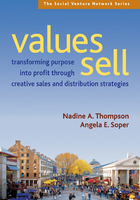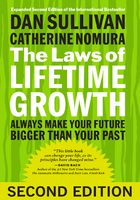More Women Leaders, Better Leadership
On my desk is a campaign button reading, “Women will make the difference.” I've had it since 1984, when Geraldine Ferraro was the first woman vice presidential candidate. And I'm sure it's right. Women have already made a huge difference as a force for change, and we continue to make critical contributions just about everywhere. Women's efforts have been invaluable, even though we have often been invisible.
There is one crucial place, however, where our talent is still largely untapped: the power tables where the course for the future is charted. A robust out-front role in setting priorities and allocating resources wherever the tough choices are made is essential to maximizing the contributions women can make. Some of us have been complacent, assuming women are naturally moving up to take our seats around the power tables. The reality is that we have a long way left to go.
A Compelling Need for New Thinking
In 2009, when Women Lead the Way went to press, a severe economic crisis gripped the United States and countries across the globe. Experts dissected the causes as whole industries collapsed. The leaders of major banks, corporations, and entire sectors of the economy were called to task. One very important factor became evident: Virtually none of the captains of industry were women. Women were not the leaders who had made the bad decisions that led, or at least added, to our economic miseries. Nicholas Kristof, columnist for the New York Times, asked, “Would we be in the same mess if Lehman Brothers [an investment house that failed] was Lehman Brothers and Sisters?”[2] My answer is, “Probably not.”
To take another example, if the nation of Rwanda had had balanced leadership, would it have descended into the terrible genocide of 1994? We'll never know for sure, but we can make an educated guess: Rwanda now has a majority of women leaders, and it is a transformed nation.
Changing the Deciders Changes the Decisions
Tough economic times, dramatically shifting world events, unmet needs in the country—all call for looking beyond the current composition of leader ship for different answers. To achieve sustainable long-term economic growth and well-being, leadership must become more balanced—and that means it must include more women.
Women's full participation in leadership improves outcomes. This is seemingly a well-kept secret in this country, although numerous books and studies have been published on it.[3] Extensive international experience in politics and current business and political research tell a powerful story of the correlation between balanced leadership and better results. When women (that means you!) step into leadership roles, you make life better—for yourself, your company or organization, and global society. Women Lead the Way shows how and why balanced leadership matters and helps you be part of creating a different future, one with enough women at the top to have a positive impact. We must move beyond having women appear “one-at-a-time performers,” as identified by Supreme Court Justice Ruth Bader Ginsburg when she spoke in the Rose Garden next to President Bill Clinton, who had just appointed her to the Court.[4]
The 30% Solution
A sprinkling of women at the top, however inspirational, is not enough to change how companies or governments operate. The weight of cultural inertia is too great. But when that sprinkling grows until the leadership group is about one-third women, important things happen. Different decisions are made, and the move toward true parity in leadership gains momentum. If we can get to at least 30% women as partners at the power tables, we have a chance to change the world. I call this the 30% Solution.
Why 30%? This has proved to be the critical mass in any group of decision makers, the tipping point at which women's voices resonate fully to add the affirmative difference of our experiences and values. When your ideas, solutions, and approaches and those of other women are amplified enough to be heard and heeded, different options become possible. Customary and often outmoded or even counterproductive ways of doing business can be replaced by fresh ideas. Few women in top positions are likely to argue, “We've always done it this way.” And with enough women in the mix, the hypercompetitiveness seemingly rampant in a homogeneous leadership structure is leavened.
With just a token woman or two at the table, the added strengths we bring simply don't carry the day. Lone women often feel like “fish out of water” or feel they must “go along to get along.” A small number of women certainly can and do make a difference by bringing more women into power. Indeed, having even a few women at power tables as role models is vital. However, it is seldom enough to change outcomes. It is tough for one or a few women to lead the way on solving nagging problems, especially anything labeled a “women's issue,” such as the need for family-friendly workplaces. More women are needed to gain the advantage of what law professor Deborah Rhode has called “the difference [that] ‘difference’ makes.”[5]
On the other end of the spectrum, while true parity in leadership—50% women—is an ultimate goal mirroring society, 30% is where real change begins to happen. Also, parity becomes easier to accomplish after the tipping point is reached, because women can change long-standing practices to create more opportunity for others who come behind them. The 30% Solution acts as a floor for women moving up, not a ceiling.
Sometimes the best ideas are hidden in plain view. More than thirty years ago, Harvard Business School Professor Rosabeth Moss Kanter[6] first identified the importance of having a critical mass of about one-third women in corporate decision-making roles to positively affect outcomes. Regardless of the strategic importance of these findings, little attention was paid to the idea until 1995, when it gained prominence on the international stage. That year, almost two hundred nations attending a United Nations conference agreed on a goal of at least 30% women in decision making. These countries saw a need to establish genuine partnerships to determine their destinies. Since then more than one hundred nations have embarked on modernizing their leadership composition in line with the 30% Solution. Country after country has moved away from the historical model of totally or mostly male leadership to actively balance the scales with more women. The experiences that have validated their decisions are included throughout Women Lead the Way.
The 30% Solution is good business as well as smart politics. Catalyst, an independent research organization with deep ties to Fortune 500 companies, has undertaken a long line of important studies about the impact of having more women at the top. The findings build a strong case for predicting outcomes. Firms with one-third or more women as corporate officers and directors reap rich rewards: higher financial performance and better bottom lines, as well as more opportunity for upward mobility and improved policies for women and families. Best-practice companies (which are unfortunately few in number) are following a women-friendly model of leadership development as part of their business plan for success.
I haven't found studies about the 30% Solution in the nonprofit sector. Based on personal experience with the CEOs and boards of directors of a wide range of foundations and organizations, I would expect that these groups too would do better with balanced leadership. This is an area for more research.
Progress around the World, Paralysis at Home
The many countries working toward balanced leadership seem to realize that they can't afford to underutilize half their population. They see that moving ahead will take all the talent, energy, and ingenuity they have available. Old customs and ways of doing business that artificially limit the pool of potential leaders are increasingly seen as shortsighted. The men who run countries and companies have come to realize that having enough women at the top to speak up and be heard produces better results. It is not a zero-sum game of women vs. men or a discussion of rights. Instead, balanced leadership is a route to improving democracy and competitiveness.
The United States is used to leading the world in gender equality and women's advancement, but it no longer does. Other countries that started considerably behind the United States on this front are now moving faster. Despite the growing body of evidence supporting more diverse leadership, and despite major problems signaling a clear need to do things differently, changes in the status quo to reflect women's shared values and experience have been slow in coming to this country. In fact, as you will see in later chapters, progress toward balanced leadership has essentially stalled. Women are seldom playing a big role in determining what problems are critical enough to be solved or in suggesting different ways of doing things.
Women as a group, the “we” of this book, have certainly not stood idly by. Women have moved forward in impressive numbers to get further education, start businesses, lead community groups, raise families, advocate for change, and go to work. Over the years I have met incredible, dynamic women in every walk of life and at every level. Women are ready to fill new roles as the major talent pipeline for the future. Yet many more educated, experienced, qualified, savvy, and smart women are poised to lead than we find at the top rungs of career ladders.
In fact, the composition of the groups of people with the authority and power to define the landscape of problems and solutions in universities, law firms, major companies, and legislatures hasn't changed much overall. The higher up you go, the more men and fewer women are creating strategic plans to address problems. Even in the nonprofit world, where a vast number of women are at the top, the bigger the organization, the more likely it is to be run by men. In all too many places, women's opinions and expertise are not sought. Women's accomplishments are not on show. Times have changed, and so have women—but the paradigm of who leads remains virtually the same. Although it is seldom discussed in the United States, the 30% Solution can help.
History confirms the power of women as a force for change when we lead the way and are joined in the effort by like-minded men. Courageous women have seen problems in our society and acted. To cite only a few examples, women's leadership ended child labor and changed the law to protect girls and women from abuse and violence. Women sought and won the right to vote and the opportunities to go to school, participate in sports, work without sexual harassment, and gain credit in their own names. Taking the next steps to make the world a better place will require closing the leadership gap.
What Women Share
Like men, women are diverse in political position, occupation, age, family relationships, race, ethnicity, and economic status. However, women have found ways to cross these fault lines, share experiences, and act to improve our society. While much is made of the differences between and among women, these are definitely not the whole story.
I learned this powerful lesson from spearheading a series of extensive polls and focus groups over almost a decade to listen to women about their concerns, hopes, dreams, and priorities for public policy. We found strong similarities across all of the divisions where we expected differences—age, political party, race, generation, even region of the country. Most women shared some critical values and visions that, on balance, diverged from those of most men in the control samples. We will discuss women's values and visions in detail in Chapter 5. They include a preference for collaboration, a longer and wider time horizon, greater appreciation of the importance of relationships, and a focus on preventing crises. Other research about the gender gap (the difference between the views of men and women) has reconfirmed these findings many times.[7]
Numerous studies have tried to quantify what causes these gender-related similarities and differences; theories range from brain biology to social conditioning of girls and boys. As a nurse, I am pretty practical and results-oriented. I can accept that we don't know all the causal factors and still work with what we do know about women and men.
Abilities women bring from our life experience, such as networking—building relationships, collaborations, and partnerships—are powerful ways to trump traditional power. As Insiders and partners rather than competitors, we can change systems and institutions to reflect our views, values, and experience. A winning consensus agenda built on shared values will promote progress on long-neglected issues.
Why This Matters to You
You are a busy person. Why should you care about wedging the door open for women and changing the status quo? Stop for a minute and look around at who is making the big decisions where you work or in your town. Are they doing a good job, or do you find some issues continually ignored? Do you ever think your leaders are pretty unconnected to the world as it looks to you?
Even if you have concerns in these areas, you might be saying, “What difference does it make whether it is men, women, or both determining the business plan for a company, the budget for an organization, or the agenda for the city council?” The answer may surprise you. It matters a lot.
With almost fifty years in the workforce, I am often struck by how many times, and in how many settings, I have heard the same series of issues needing resolution. For example, do you and your friends worry about the level of stress in your lives and how it affects you and your family? Do you want to see work and family continue to be two separate worlds or intertwined parts of the lives of all adults? Are you looking for more respect for your contributions (and maybe those of other women as well), whether at home or at work? Do you feel we are missing the boat on meeting the needs of children and families as important priorities? Are you tired of feeling you have to be twice as good or do twice as much work as your male colleagues to get ahead? Do you want to work for a company (or be the CEO of one) that “walks the walk” on sustainability and the importance of the workforce? If so, you are not alone. Business publications are full of stories about how both male and female employees in the new workforce want to help achieve a greater purpose, to advance their careers while being engaged in the community, and to participate actively in the lives of families and friends.
The decisions of business and political leaders on whether and how these issues are addressed are influenced by many factors, and one of those factors is the life experience of men and women. Our current leaders, who continue to be overwhelmingly male, generally have not spent and are not spending much time or energy to create the kind of world many of us wish to see. Lots of women are working at it, allied with men, especially younger men. But the women are often pressing for change as outside advocates or activists. We are still far from having enough Insiders who share our ideas and are charged with formulating and implementing solutions.
To provide fresh ideas and new approaches, we need a significant group of women who are equals in decision making and who can and will make things happen. When a critical mass of women and men decide together how to move companies, communities, or the country, our ideas will flourish. Women will lead the way. As we become full partners in leadership, we will open up frozen systems, provide access and opportunity, change agendas, and see bottom-line improvements for business, society, families—and women. The 30% Solution is a way to bring about this partnership. It will lead to results that are better for you, your family, and your community.
Moving In from the Outside
The women's movement has concentrated on “Outsider” work: advocating, marching, challenging discrimination, and banging on the door for entry to change the way business is done, one company or one law at a time. This approach has brought us a long, long way toward equality. How dramatically women's lives and rights have changed since the days of the suffragettes who achieved women's right to vote in 1920! But with the hundredth anniversary of this landmark coming up in 2020, we need a new road map that adds an Insider strategy.
One of the best descriptions of the impact of women's change- oriented leadership as we move from Outside to Inside is by Anna Quindlen, best-selling author and Pulitzer Prize–winning columnist, who has laid out the importance of “Inside Outsiders” stepping up as managers and executives. Her thesis is, “By its very nature, women's leadership is about redefinition, while men's leadership has been about maintaining the status quo. . . . It's difficult to see that clearly from inside the endless loop of accepted custom.” My experience is consistent with her description of how Insiders come with “deeply ingrained assumptions and the inevitable sense of business as usual,” and how Outsiders joining the discussions bring “a fire in the belly that breeds a willingness to step off the treadmill of custom.”[8] Women—especially when there are enough of us to press ideas collectively—bring a value-added benefit that follows from our differing experiences, generally outside the power structure, and our passion for workable solutions.
The Leadership We Need
Simply put, diverse leadership that looks like America will be better. Balanced leadership will waste less talent. It will take full advantage of the rapidly increasing pool of talented women who are as accomplished in their fields as their male counterparts, and whose management skill set and techniques match the 21st-century realities of a knowledge-based economy and a diverse global workforce. As recent Outsiders, women will also bring a fresh outlook, a willingness to move beyond stale thinking and adapt tactics to find badly needed answers to old problems as well as new ones. We will cast a more critical eye on policies and practices that have passed their shelf life. So far we seem to have underestimated our strength as Insiders—and so has our country. But we have reached another crossroads in the advancement of women.
Let's face it. We need all the good new leadership talent we can get. Bill George, Harvard professor of management practice and former head of Medtronic, has written extensively about “authentic leadership,” which he describes as based on inspiring leaders who can bring people together to get things done. Calling for redefining leadership for the 21st century, George says, “People are too well informed to adhere to a set of rules or to simply follow a leader over a distant hill. They want to be inspired by a greater purpose.”[9] Authentic leadership isn't and shouldn't be reserved for an elite few or for one gender; George gives examples of leaders such as Ann Fudge, former CEO of the big public relations firm Young & Rubicam Brands; Marilyn Carlson Nelson, who turned around Carlson's, the family travel firm; and Anne Mulcahy, CEO of Xerox, who took over the company in bad times and made it profitable.
Over the years I have worried about where to find the values-based and future-oriented leaders society needs in these fast-changing times and this interconnected world. I have kept coming back to an important fact hidden in front of me: these leaders are more likely to be women than men. You probably know more women than men who listen first before deciding, move toward teamwork and horizontal management and away from top-down hierarchical structures, and focus on diplomacy first rather than using force and power. These traits are all hallmarks of a different type of leadership, one that fits the times.
An example of how this can work occurred when Congress was in gridlock on what stimulus package would help the country in a deep recession. Despite the dire times, the usual partisan warfare prevailed until two moderate Republican women, Senators Susan Collins and Olympia Snowe, stepped forward to forge a bipartisan consensus. We need more of this kind of leadership, which can end stalemates. Obviously men in Congress have reached many a compromise over the years, but women's leadership style is likelier to achieve solutions with less posturing and wasted time.
More Women at the Table Equals More Progress for All
We will get further by reframing the debate on women's advancement from an argument about rights and justice to one promoting positive results-oriented progress for everyone. “Progress,” like “success,” can be defined in many different ways. I would define it as including increased attention to giving all children a healthy start and stronger focuses on education, health, and meeting the needs of working families. Many of the women—and men—I have met in a long career see a similar need to define “success” as more than status and wealth. Truly successful companies are not just financially viable in the current quarter; they have good long-term returns for both shareholders and stakeholders.
Marie Wilson, founder of The White House Project, puts it beautifully in her book Closing the Leadership Gap: Add Women, Change Everything. She says, “To trust a woman is to trust in a different future awash with ideas and lit by the energy of all people. It means more options. It means a fairer equation.”[10]
A Vision of the Future
Here's what I see in the crystal ball: With balanced leadership, the United States reinvigorates a commitment to both individual and societal responsibility. It has healthier businesses and happier families, with strong supports for working families. Working couples and single moms can begin to replace stressful juggling with an integrated career and family life (even without a full-time partner at home). At work, women's skills, ideas, approaches, and styles are respected—even sought after—because they add to the bottom line instead of being seen as a problem to be tamed. The workplace, regardless of sector or size, has flexibility and equal pay as customary practices.
We can achieve these goals by turning the following dreams into reality. Let's aim to do it by our hundredth anniversary as full citizens in 2020:
We have reached the tipping point and are moving rapidly toward equal representation of women in political leadership.
“Womenomics”—economics as if women really matter—is widely supported as a mainstream strategy to grow a productive economy and eliminate poverty.
A revitalized social compact places a premium on social and personal responsibility, caring and compassion, families and community.
A recognized accountability framework with benchmarks and measurements exists to continue to open opportunity and avoid sliding backward.
Women at the top are expected, not seen as unusual. Young women grow up expecting to be leaders, just like young men.
To accomplish changes like these, women must lead the way from strength. Having more women leaders matters—a lot. Together, as transformational leaders, we can assure more equality, opportunity, and empowerment for all women and girls, not just white middle-class women. A winning consensus agenda built on shared values will promote progress on long-neglected issues. Along the way, women can do better for ourselves and our families.
Our dreams can come true. Step up to leadership. Bring more women up with you. Together we can achieve the 30% Solution and make life better for you, your family, your community, and society. Shared decision making—with balanced leadership—will change the world.













